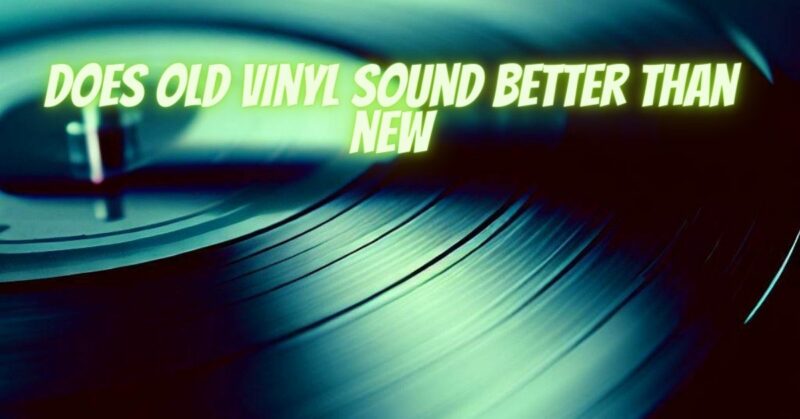Vinyl records have been a staple of music playback for decades, and many enthusiasts argue that the quality of old vinyl records surpasses that of newer pressings. As vinyl has experienced a resurgence in popularity, collectors and audiophiles often seek out vintage records for their perceived superior sound quality. In this article, we will explore the factors that contribute to the perceived difference in sound between old and new vinyl records and whether the age of the vinyl truly impacts the listening experience.
Vinyl Production: Then and Now
In the heyday of vinyl records, during the mid-20th century, many albums were pressed on high-quality vinyl using well-maintained equipment. The production process prioritized sound quality, and albums were often mastered with analog technology, tailored for the specific nuances of the vinyl format. These vintage records were made from thicker, high-quality vinyl, and the mastering process emphasized dynamic range and fidelity.
In contrast, the vinyl industry declined in the late 20th century with the rise of digital formats, and many pressing plants shut down. However, with the vinyl revival in recent years, new pressing plants have emerged, offering a mix of high-quality and mass-produced records. The quality of new vinyl can vary significantly depending on the manufacturer, mastering process, and vinyl material used.
Wear and Tear on Old Vinyl
One significant aspect of old vinyl records is the wear and tear they might have endured over the years. Repeated plays, exposure to dust and contaminants, and improper storage conditions can lead to surface noise, scratches, and groove wear. These imperfections can degrade sound quality and introduce pops and crackles during playback.
Some vinyl enthusiasts argue that this wear and imperfections on old records contribute to a “warmer” and more authentic sound, reminiscent of the vintage charm associated with vinyl playback. However, it is essential to note that excessive wear can also negatively impact sound quality, resulting in distorted or muted audio.
The Vinyl Resurgence and Quality Control
As vinyl’s popularity soared in recent years, the demand for new records increased significantly. This led to a surge in vinyl production, with various new pressing plants entering the market. The quality of new vinyl records can vary depending on factors such as the pressing plant’s quality control, the mastering process, and the vinyl material used.
Some modern records are produced using higher-quality vinyl and are mastered with the intention of preserving the analog sound experience. However, not all new records receive the same level of attention to detail, and some may be mass-produced with less emphasis on sound quality.
Subjectivity of Sound Perception
It’s important to recognize that the perception of sound quality is subjective and can vary from person to person. Audiophiles and collectors who prefer the vintage sound of old vinyl may appreciate the warmth and character introduced by wear and groove imperfections. On the other hand, individuals seeking a more precise and pristine sound may find certain new pressings to be more to their liking.
The question of whether old vinyl sounds better than new is complex and subjective. While vintage records hold a nostalgic appeal and can offer a distinct analog experience, their age-related wear and tear may affect sound quality negatively. On the other hand, modern vinyl records produced with care and attention to detail can provide excellent sound fidelity and durability.
Ultimately, the perceived superiority of old or new vinyl will depend on individual preferences and expectations from the listening experience. Whether you enjoy the vintage charm of an old vinyl or the pristine sound of a well-pressed new record, the joy of vinyl lies in the appreciation of music in a tangible and authentic format.


